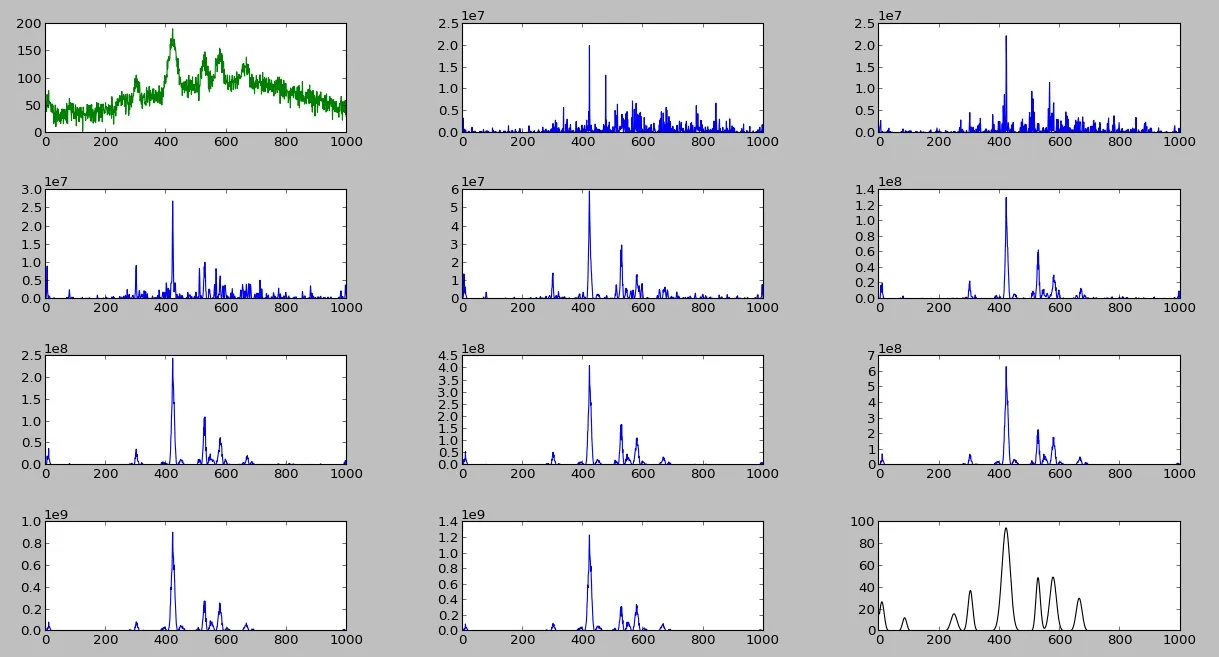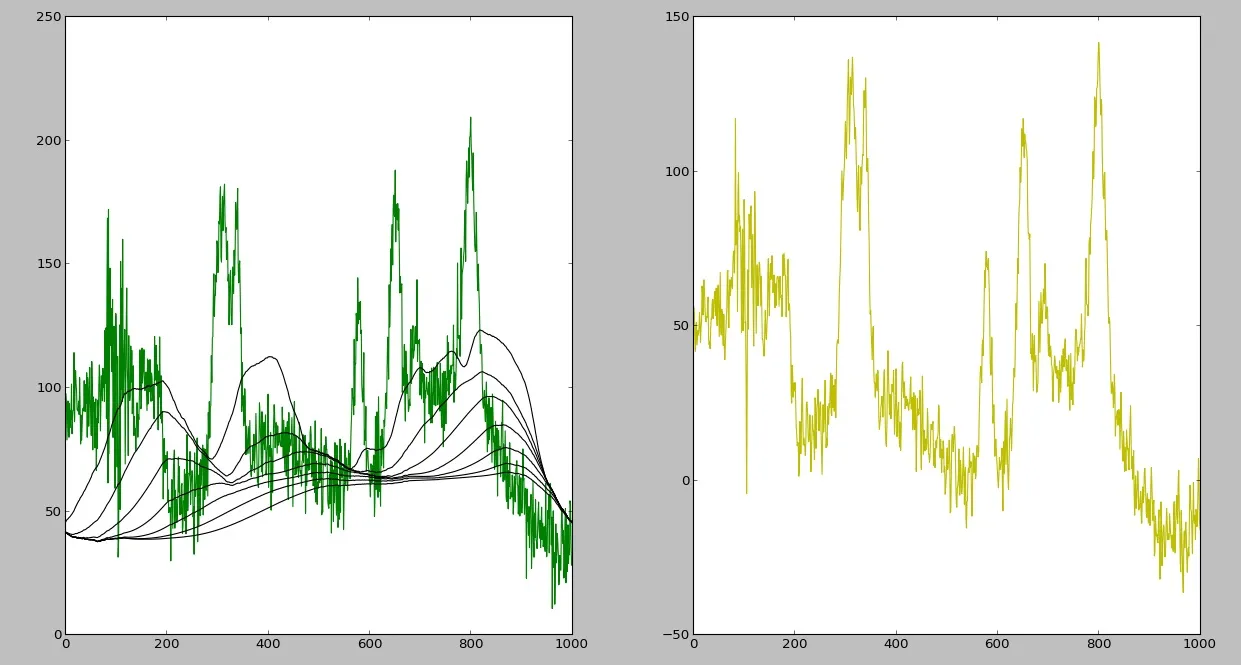主要问题:如何反转scipy.signal.cwt()函数。
我看到Matlab有一个反连续小波变换函数,它可以通过输入小波变换返回数据的原始形式,尽管您可以过滤掉不想要的切片。
由于scipy似乎没有相同的功能,因此我一直在尝试找出如何使数据以相同的形式返回,同时消除噪声和背景。 我该怎么做? 我尝试将其平方以去除负值,但这给我带来了太大且不完全正确的值。
这是我一直在尝试的:
# Compute the wavelet transform
widths = range(1,11)
cwtmatr = signal.cwt(xy['y'], signal.ricker, widths)
# Maybe we multiple by the original data? and square?
WT_to_original_data = (xy['y'] * cwtmatr)**2
这里有一个完全可编译的简短脚本,展示了我试图获取的数据类型以及我已经拥有的数据等:
import numpy as np
from scipy import signal
import matplotlib.pyplot as plt
# Make some random data with peaks and noise
def make_peaks(x):
bkg_peaks = np.array(np.zeros(len(x)))
desired_peaks = np.array(np.zeros(len(x)))
# Make peaks which contain the data desired
# (Mid range/frequency peaks)
for i in range(0,10):
center = x[-1] * np.random.random() - x[0]
amp = 60 * np.random.random() + 10
width = 10 * np.random.random() + 5
desired_peaks += amp * np.e**(-(x-center)**2/(2*width**2))
# Also make background peaks (not desired)
for i in range(0,3):
center = x[-1] * np.random.random() - x[0]
amp = 40 * np.random.random() + 10
width = 100 * np.random.random() + 100
bkg_peaks += amp * np.e**(-(x-center)**2/(2*width**2))
return bkg_peaks, desired_peaks
x = np.array(range(0, 1000))
bkg_peaks, desired_peaks = make_peaks(x)
y_noise = np.random.normal(loc=30, scale=10, size=len(x))
y = bkg_peaks + desired_peaks + y_noise
xy = np.array( zip(x,y), dtype=[('x',float), ('y',float)])
# Compute the wavelet transform
# I can't figure out what the width is or does?
widths = range(1,11)
# Ricker is 2nd derivative of Gaussian
# (*close* to what *most* of the features are in my data)
# (They're actually Lorentzians and Breit-Wigner-Fano lines)
cwtmatr = signal.cwt(xy['y'], signal.ricker, widths)
# Maybe we multiple by the original data? and square?
WT = (xy['y'] * cwtmatr)**2
# plot the data and results
fig = plt.figure()
ax_raw_data = fig.add_subplot(4,3,1)
ax = {}
for i in range(0, 11):
ax[i] = fig.add_subplot(4,3, i+2)
ax_desired_transformed_data = fig.add_subplot(4,3,12)
ax_raw_data.plot(xy['x'], xy['y'], 'g-')
for i in range(0,10):
ax[i].plot(xy['x'], WT[i])
ax_desired_transformed_data.plot(xy['x'], desired_peaks, 'k-')
fig.tight_layout()
plt.show()
这个脚本将输出以下图片:

第一个图是原始数据,中间的图是小波变换,最后一个图是我想要得到的处理后的数据(去除背景和噪音)。
有人有什么建议吗?非常感谢帮助。
 从图中可以看出,背景去除仍存在问题(每次迭代后都会向右移动),但是
从图中可以看出,背景去除仍存在问题(每次迭代后都会向右移动),但是
scipy.signal.icwt函数可以获得反向并隐藏所有数学和技术细节,但似乎你必须自己执行。 所以,问题是我不理解如何执行cwt()函数的反向操作的数学原理。文档中并没有足够的描述。 - chase